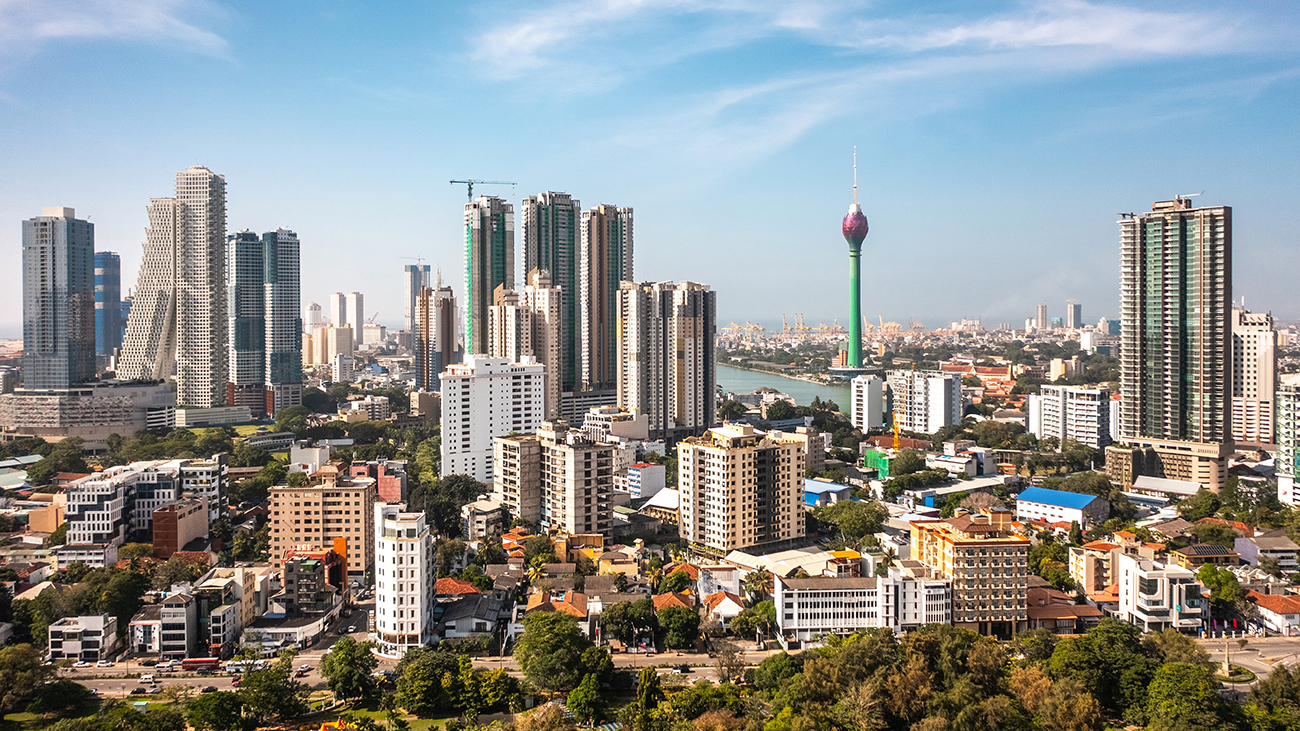Sri Lanka has always had great potential for economic development, say experts; and this latest recovery once again offers attractive prospects for external investors.
“The potential for the economy is enormous, especially around sectors such as tourism, global supply chains and service sector exports,” said Michael Iveson, global economics researcher at the Lakshman Kadirgamar Institute, Sri Lanka. The country “could be a goldmine for potential projects, with a skilled workforce, a hard-working population and vast natural resources.”
Indicators pointing upwards
Export earnings from tea, rubber and coconut-based products have been positive from February. Quartz deposits in many parts of the country and duty-free access to markets including the European Union and India have made the solar energy manufacturing sector attractive. The island’s manufacturing sectors – particularly apparel, textiles and electronics – offer opportunities for foreign capital, notes Hesham Zreik, founder and CEO of FasterCapital, a Dubai-based angel investor.
In the first twenty days of April alone, Sri Lanka welcomed more than 100,000 tourists. “Tourism has made a very strong recovery after four years of turbulence,” says Iveson. “By partnering with local businesses and communities and making the most of a rich heritage, culture and hospitality, tourism will continue to thrive and play an important role in Sri Lanka’s economic recovery.”
Despite the setbacks, many foreign companies have done well on the island. The Port of Colombo is the best performing port in South Asia and is home to some of the bigger names in logistics, including Dart Global Logistics and EFL Global Shipping. Other foreign companies operating in Sri Lanka include IFS, a global business software solutions company; HCL Technologies, a global IT company; Apollo Marine International, a food processor; pharmaceutical giant SmithKline Beecham; and Best Pacific International Holdings, a clothing manufacturer. International events such as Startup Weekend by Techstars, Seedstars and AngelHack have arrived in Sri Lanka, encouraging a boom in startups.
There are also signs that the economic recovery is gaining momentum.
The World Bank expects GDP growth of 1.7% this year and 2.4% in 2025. The Sri Lankan rupee has appreciated against other currencies in the first four months of this year, including the US dollar, the euro, the British pound, the Indian rupee and the Australian dollar. The Central Bank of Sri Lanka reported that the state had $5.4 billion in gross official reserves at the end of April, down from $4.4 billion at the end of 2023. And the central bank notes that the rupee’s real effective exchange rate of 24 index points keeps existing. well below the threshold of 100, indicating that external competitiveness is maintained.
“Several indicators used by currency traders point to a likely further appreciation of the currency,” said Vidhura Tennekoon, an assistant professor of economics at Indiana University. “Notably, the central bank has actively intervened in the market in recent months to curb excessive appreciation, while also seeking to strengthen its foreign reserves.” In September, Fitch Ratings upgraded the default rating of Sri Lanka’s long-term local currency issuer rating from Restricted Default to CCC-.
“The risk of further defaults remains, but if the right macro measures are actively pursued, we can avoid the worst,” said Alnoor Bhimani, professor of management accounting and director of the South Asia Center at the London School of Economics and Political Science.
Stimulating direct foreign investment
The country’s recent history of economic instability has nevertheless led to a negative perception of Sri Lanka and its attractiveness for foreign direct investment (FDI). Net foreign direct investment in 2022, as a percentage of GDP, was only 1.2%, much lower than that in regional countries Malaysia (3.6%) and Vietnam (4.4%). Foreign direct investment, including foreign loans, fell dramatically last year, from $1.2 billion in 2022 to $758 million. Equally concerning is the mix of investment objectives. FDI in recent years has concentrated on traditional sectors, and the composition of Sri Lanka’s export basket has remained unchanged for about 25 years. Diversification into new sectors is necessary to make the country more resilient to external shocks, experts argue.
So far, Wickremesinghe’s government seems to agree. The development plan links sustainable implementation of macroeconomic policies with a focus on developing sectors of the digital and green economy and encouraging competition through liberalization and divestment of state-owned enterprises.
“The government’s focus on infrastructure development, digital transformation and export diversification could boost economic growth in the long term,” Zreik said. Wickremesinghe has also highlighted the potential of renewable energy, including an ambitious plan to achieve net-zero emissions by 2050. An investment of $11.5 billion is needed to shift 70% of electricity consumption to renewable energy by 2030. In 2022, the legal obstacles to large-scale private investments will be removed.
But making up for Sri Lanka’s lost years and turning the island into an enduring FDI magnet will require a careful balancing act between liberalization and meeting basic human needs.
“Transparent and clear policies are still needed to smooth foreign investment,” Iveson said. And while the economy “stabilizes at its highest levels, inequality increases dramatically,” he warns. “The middle class is being stretched by higher energy prices, rising food prices and weaker public infrastructure. The austerity measures needed to finance structural reforms create significant challenges for ordinary people.”
“Uncertainty about China’s near-term growth prospects amid resurgences in coronavirus cases adds another downside,” Iveson said. “Aggressive monetary policy tightening by the Fed and [the European Central Bank] weighs on global financing conditions, with an impact on FDI decisions.





















